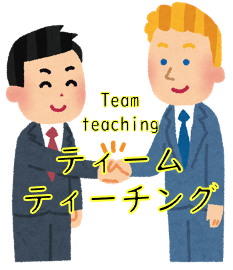私はシドニー郊外の公立小学校で教えています。いわゆるクラス担任ではなく、日本語バイリンガル教師として勤務し、12年目に入ります。
NSW州でたった4校しかないバイリンガル校の一つで、当校では日本語を扱っています。他の3校では、韓国語、中国語、インドネシア語のバイリンガルプログラムが実地されています。
その当時の首相の案で2010年から始まったこの特別プログラムは、この4校に丸投げ状態でプログラムが始まりました。
日本語でどの教科を教えるのか?と言う大きな問題がありました。トライアンドエラーを繰り返し、様々な科目を教えてきました。そして、現在は日本語でCAPA(美術とパフォーマンス)、理科とテクノロジーそして、日本語リテラシーを週に7時間半で教えています。
今日はその中でも、とってもチャレンジングな『理科』を『オーストラリアのシラバスに沿って日本語の観点から教える』について書きたいと思います。
なぜ、『日本語の観点から』と言う言い方をわざわざするのかと言うと、
- 日本語で表現できない(しない)言葉
- 言葉が存在しても私自身でさえ使った事がない程の専門的な言葉
- 高校の理科や化学では習うかもしれないが、小学生に教える日本語ではない言葉
- そもそも日本語では存在しなかったり英語では存在しない言葉
などなど、どの程度妥協し、折り合いをつけてながらもシラバスに沿った内容の授業を進めていくのか。。。苦労が絶えません。実際に授業するまでの流れを簡単に説明すると。
1.『Japanese perspective』と呼ばれるプログラムをまずは何よりも先に作成します。CLILでは一般的な方法です。トピック全体の内容を深く理解し、プログラムを読み込見ます。そして重要な言葉と繰り返し使用できる文の構造を選び一覧にします。
2.この一覧を見ながら各レッスンの教材(ワークシート、スライド、フラッシュカード)を作成
もともと教科書の様なものは無く、オーストラリアの科目を日本語で教えるとなると、検索しても教材は見つかりません。全て手作業でゼロから作ります。
前回の投稿に載せた例のワークシートを1つ作成するのにも大変な時間がかかります。英語でするなら簡単だけど、日本語だけで出来るワークシートに仕上げないといけないので、ここに結構なエネルギーを注ぎます。
ワークシートだけ見ると、一見簡単そうで、何故にここにこんなエネルギーと時間を?と思われると思いますが、
長年の教師経験のある人でさえ、日本語だけで教える理科の教材作成のコツが分かってくるのに2−3ねんはかかる様です。かなりトリッキーなプログラムです。
教材を作る際に大変お世話になっているのが、いらすとやさんのサイトです。日本語だけで教えるには絵がないと無理です。
様々なイラストがあって、理科の教材のみならず、動画やデジタルスタンプ作成などにも大変重宝しています。ありがとう!
そして、もう一つはTwinkleです。こちらにはオーストラリアのカリキュラムに沿った内容の教材がたくさんあります。
内容が英語なのでそのまま使えないですが、言葉を日本語に変えて使えたりすることがあるのでこちらにも大変お世話になっています。
そうです、オーストラリアのシラバスに沿った理科をCLILで(日本語だけで)教える事を可能にしているのは、
- 『Japanese perspective』一覧表
- 大量のイラスト
- オーストラリアのカリキュラムをモーラした教材が揃ったTwinkle
ですね。そして、何よりもティームティーチングで一緒に教えているクラス担任の先生達です。ありがとう!
I teach at a public primary school in a suburb of Sydney. This is my 12th year working as a bilingual Japanese teacher, not a so-called classroom teacher.
We are one of only four bilingual schools in NSW and our school offers Japanese. The other three schools offer bilingual programs in Korean, Chinese, and Indonesian.
This unique program started in 2010, and at the suggestion of the then Prime Minister, the program was thrown into the hands of these four schools.
The big question was, “Which subjects will be taught in Japanese? This was a big problem. Through repeated trial and error, we have taught a variety of subjects. For a total of 7.5 hours a week, we are now teaching Science and technology, CAPA (art and performance) and Japanese literacy.
Today, I would like to write about very challenging aspects of teaching science content “from a Japanese perspective”, in accordance with the Australian syllabus.
Why do I say “from a Japanese perspective”?
- Words that cannot (or will not) be expressed in Japanese
- Words that are so specialised that even if they existed, I myself have never used them.
- Words that might be taught in high school science or chemistry subject, but not in the Japanese language taught to primary students.
- Words that do not exist in Japanese or English, to begin with.
So,
How much compromise is needed to keep the syllabus in line with the content of the class? It is a constant struggle. Let me briefly explain the actual teaching process.
First and foremost, a program called “Japanese perspective” is created, which is a common method in CLIL. You need to read the program in-depth to understand the entire topic. Then, we select and list important words and sentence structures that can be used repeatedly. Then create teaching resources (worksheets, slides, flashcards) for each lesson based on this list
There is no such thing as a textbook, and when teaching an Australian subject in Japanese, you will not find any teaching materials even if you search on the internet. I create everything from scratch.
It takes a lot of time to create one of the example worksheets I included in my last post. It would be easy to do it in English, but I have to make a worksheet that can be done only in Japanese, so I put a lot of energy into this.
At first glance, the worksheet seems simple enough, so you may be thinking, “Why so much energy and time?
But it seems to take 2-3 years for even experienced teachers to get the idea of creating science materials taught only in Japanese. It is a very tricky program.
The site that has been a great help to me in creating teaching materials is Irastoya’s site. Teaching in Japanese alone is impossible without pictures.
There are various illustrations and they are very useful not only for science teaching materials but also for making videos and digital stamps. Thank you!
And another one is Twinkle. Here you can find a lot of teaching materials with content that is in line with the Australian curriculum.
The content is in English, so you can’t use it as it is, but you can change words to Japanese and use them, so I am very grateful for twinkle site as well.
Yes, it is possible to teach science in CLIL (in Japanese only) in accordance with the Australian syllabus if I use
- List of “Japanese perspective
- A large number of illustrations from irasutoya
- Twinkle, a collection of teaching materials based on the Australian curriculum
And most of all, the classroom teachers who teach with me together. I really enjoy Team-teaching. Thank you!

